Stainless
Stainless Steel
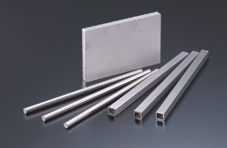
Features of stainless steel
Stainless steel is extremely resistant to corrosion compared to other steels. However, it can be eroded or rusted under certain environments and usages so it is important to use it correctly. Stainless steel is a type of alloy and is normally steel with added chrome or nickel. One property of stainless steel is that the chrome reacts with the oxygen in the air and creates a passive film on the surface making it difficult to rust. Further, it is good for mechanical work since it has higher tensile strength and is better at stretching than steel. Therefore, it does not need plating or coating and is used in many products including outdoors and humid areas, and in machinery that handles pharmaceuticals.
Varieties of stainless steel
Categorization by chemical composition Chrome type stainless steel and chrome/nickel stainless steel
Stainless steel is mostly made up of steel and the main components are chrome and nickel. Chrome stainless steel contains only chrome and chrome/nickel stainless steel contains both chrome and nickel. Representative examples are: 13 chrome stainless steel containing 13% chrome, 18 chrome stainless steel containing 18% chrome, and 18 chrome 8 nickel, which is generally used for SUS304. As well as chrome and nickel, impurities such as carbon, phosphorous and sulfur, and additives such as molybdenum, copper, niobium and titanium greatly affect the features of the stainless steel. A variety of products can be made.
Categorization according to metallography martensite, ferrite, austenite
Stainless steel can be categorized by metallographic structure as well as chemical components. The organization of metals differs according to the structure of their crystals. These are fixed by the components and temperature and the typical varieties of metallographic structure are martensite, ferrite and austenite. Martensite is a rapidly cooled version of austenite, leaving deformations in the crystals and making it hard. Chrome stainless steel can have either martensite structure of ferrite structure. Chrome/nickel stainless steal is generally austenite and is called austenite stainless steel.
| Main examples of stainless steel | ||
| Category |
Steel type |
General organization |
| Austenite |
SUS 201 |
17Cr-4.5Ni-6Mn-N |
| SUS202 |
18Cr-5Ni-8Mn-N |
|
| SUS301 | 17Cr-7Ni | |
| SUS302 | 18Cr-8Ni-0.1C | |
| SUS303 | 18Cr-8Ni-High S |
|
| SUS304 | 18Cr-8Ni | |
| SUS304L | 18Cr-9Ni-Low C |
|
| SUS316 | 18Cr-12Ni-2.5Mo | |
| SUS316L | 18Cr-12Ni-2.5Mo-Low C |
|
| Ferrite |
SUS430 | 18Cr |
| SUS444 | 19Cr-2Mo-Ti,Nb,Zr-extremely low(C,N) |
|
| Martensite |
SUS410 | 13Cr |
1. Category
Reference:Stainless Steel Cooperative, Revised Stainless Steel Introduction
Surface finishes of steel
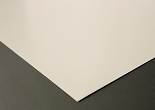 SUS304 2B
SUS304 2B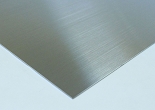 SUS304 HLgrinding
SUS304 HLgrinding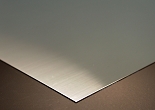 SUS304#400grinding
SUS304#400grinding
| Main surface finishes of steel | ||
| Name | Finishing type | Finishing method |
| No,1 | Silver-white matte | After hot rolling, heat treated, pickled or treatment based on this |
| No,2D | Dull grey frosted finish (dull finish)
|
After cold rolling, heat treated, pickled or gently cold-rolled with a frosted roller |
| No,2B | Smoother than 2D with slight brilliance |
Cold-rolled 2D finish to give the right level of brilliance with a light roller |
| BA | Finish close to the brilliance of a mirror |
After cold rolling, bright heat treatment, and light cold-roll to increase the brilliance |
| No,3 | Brilliant and slightly rough finish |
100-120 Abrasive grain grinding belt applied to No.2D or No. 2B finish |
| NO,4 |
Brilliant and fine |
150-180 Abrasive grain grinding belt applied to No.2D |
| #400 |
Brilliance close to BA |
No.2B finish ground by a 400 buffer |
| HL (Hairline) |
Finish with long continuous grinding |
Appropriate grain grinding belt applied long and continuously like a hair across the finish (normally 150-240 abrasive grain) |
Reference:Stainless Steel Cooperative, Revised Stainless Steel Introduction


 HOME
HOME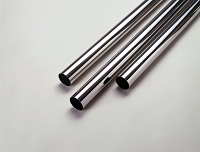
 Preceding page
Preceding page